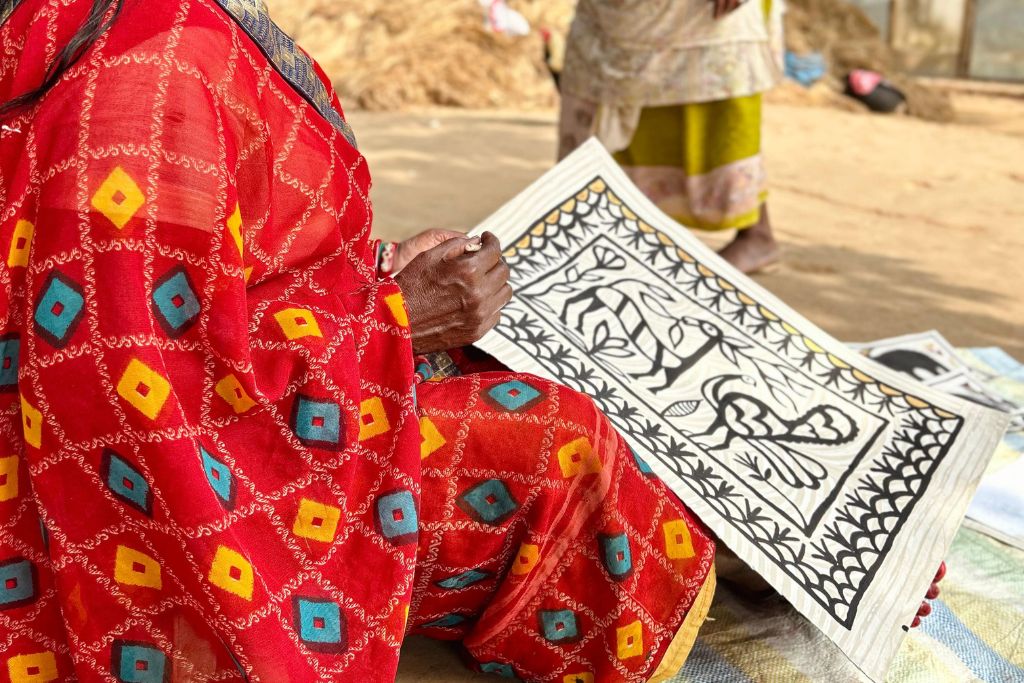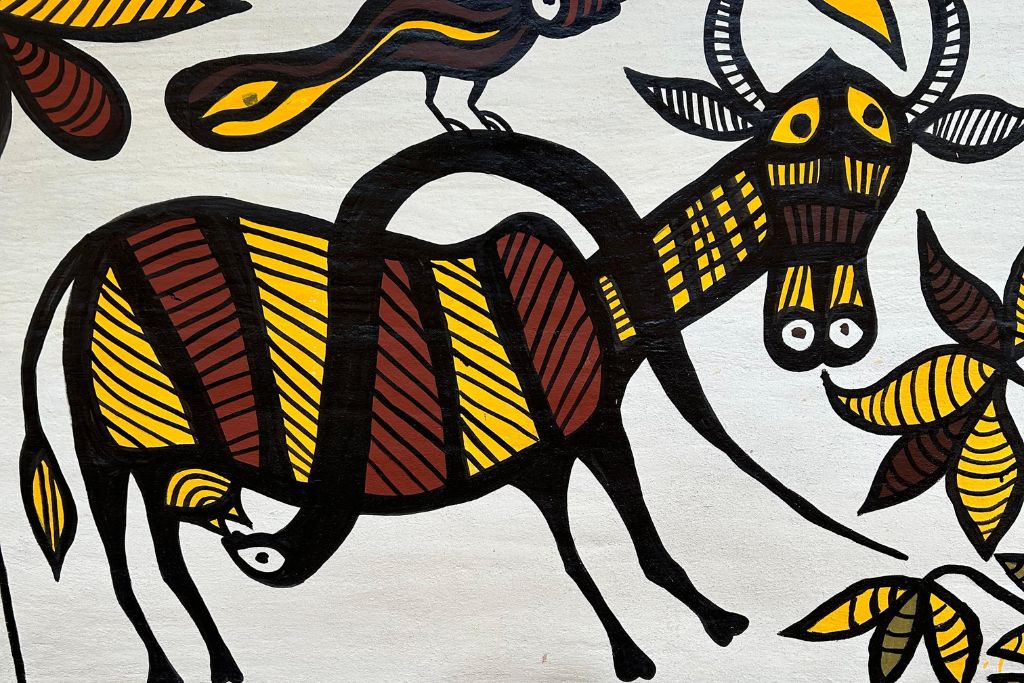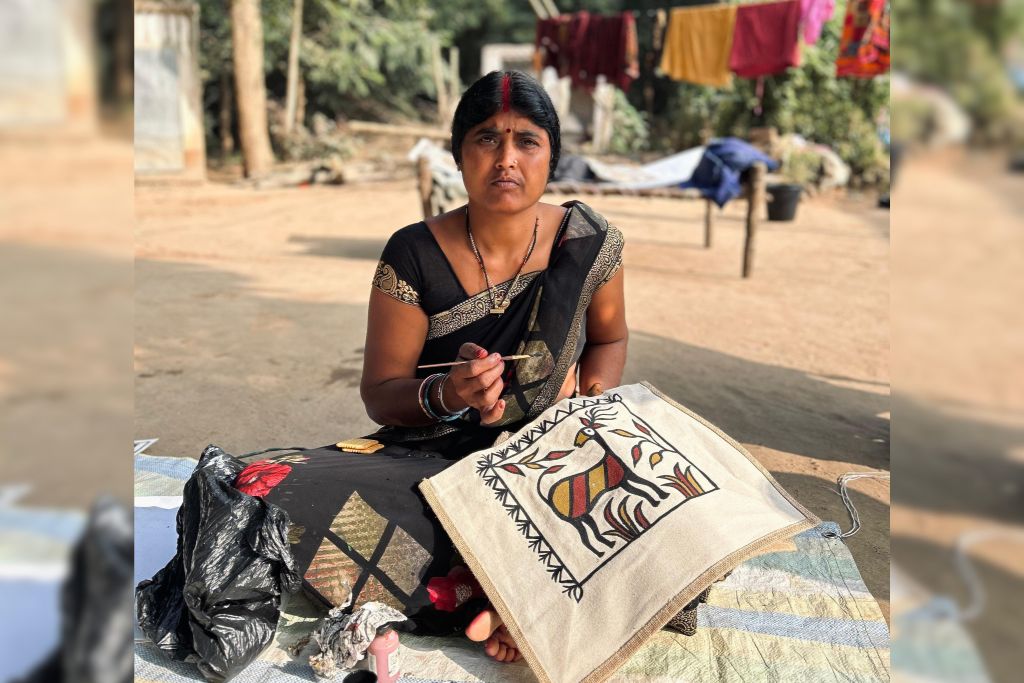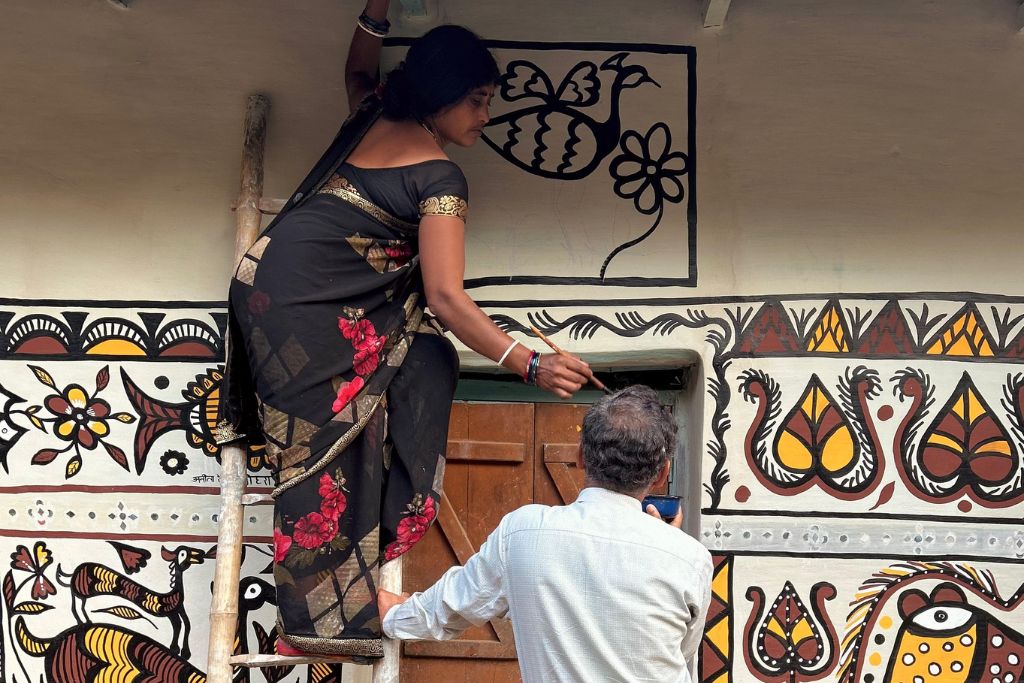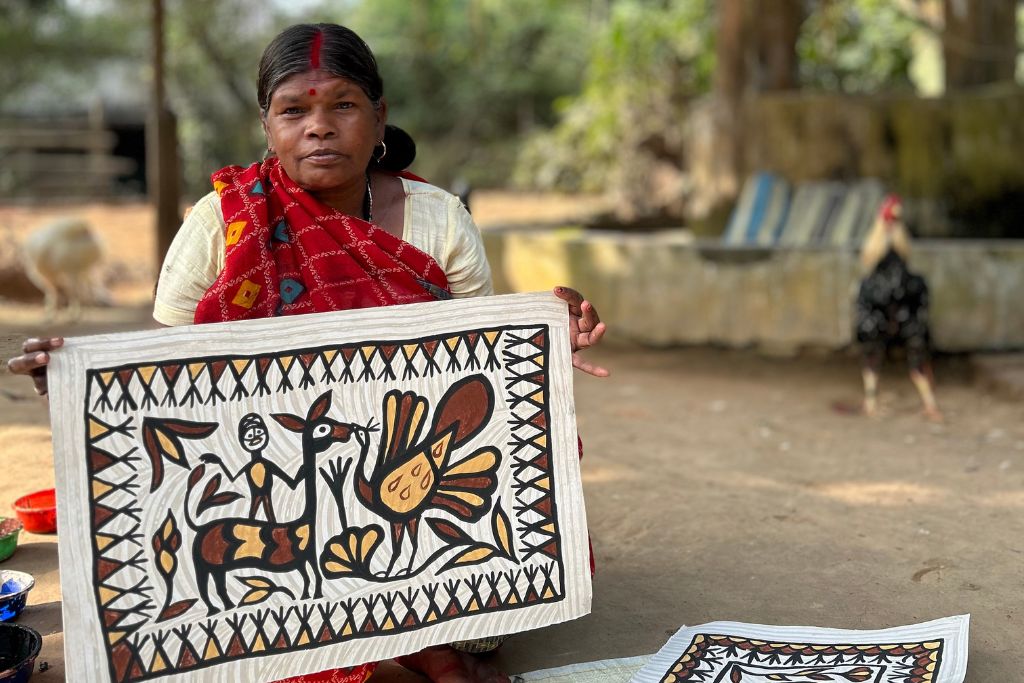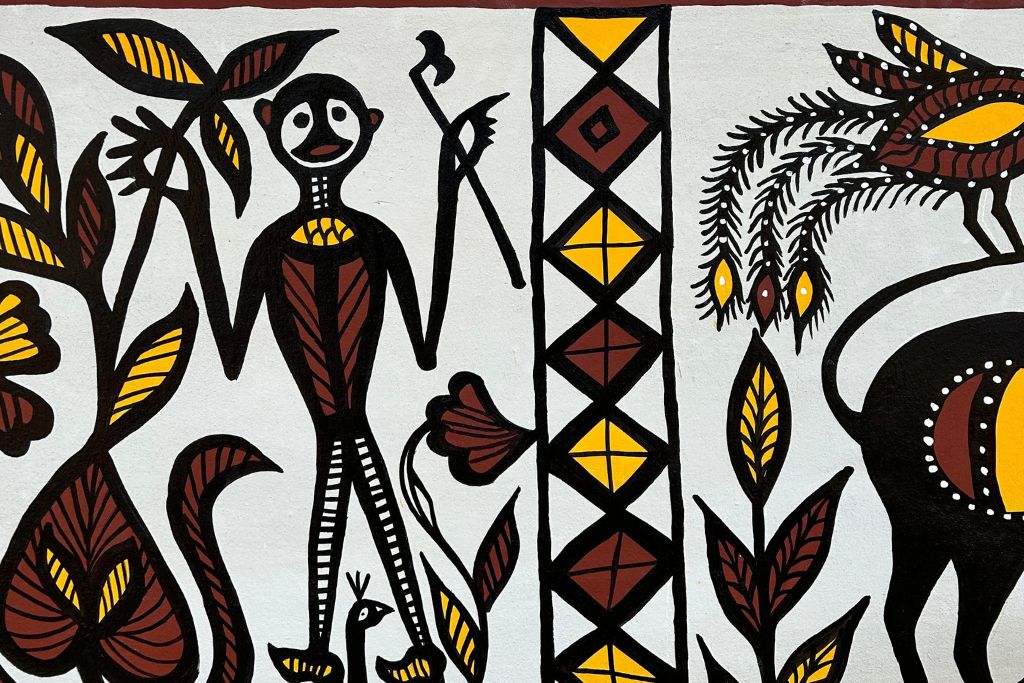
Sohrai workshop brings together artistic hiveminds
Khwabgaon near Jhargram experienced a collaborative exchange between two cultures as artists from Hazaribag, Jharkhand, came over to Konedoba in Jhargram district and painted an illustrative Sohrai mural for three days.
Sohrai, a harvest festival, is widely celebrated among various tribal communities, including Oraon, Santal, Ho, Munda, Bhumij, etc., in Bengal, Jharkhand, Chhattisgarh, Bihar, and Odisha. Recently, the Chalchitra Academy, founded by Mrinal Mandal, hosted a three-day workshop (6th-9th January), featuring artists Sajwa Devi and Anita Devi from Jharkhand for a cultural exchange on Sohrai’s theme between two communities. The image depicts details from the wall painted during the workshop, showcasing Sohrai motifs from Jharkhand.
The artists collaborated with the local community to create a Sohrai mural and painted paper panels and other objects with songs and stories related to Jharkhand’s Sohrai motifs. In the image, Sajwa Devi works on paper panels as a Santal woman from the village observes.
Also known as the cattle festival, it celebrates the harmonious co-existence of humans with diverse biological nature, including domestic and wildlife. Rooted in the cult of fertility, it signifies abundance in agriculture and livestock. Detail from the wall painted by artists Sajwa Devi and Anita Devi.
As the market for this painting style grows, motifs from Sohrai wall murals are reproduced on paper panels and other objects, primarily for sale. Anita Devi pauses her work to glance at the camera.
Anita Devi, skilled with the paintbrush, swiftly covers sections of the wall with thickly coloured motifs while perched on a bamboo ladder. Here she is, painting the wall.
Artist Koustav Chakraborty designs the logo for Khoabgaon by Chalchitra Academy. Initially, Khoabgaon engaged rural communities in Jhargram, including the Lodha tribe in Lalbazar and the Santals of Konedoba, in artistic traditions through a free art school. Workshops on various styles of art and crafts (like Kutum-Katum, traditional doll-making, mural-making) have turned the village into an artistic hub, earning it the name “Khwab-gaon” (village of dreams) by Jogen Chowdhury.
Sajwa Devi shared stories and songs related to Sohrai motifs, rooted in Jharkhandi dialect and folklore. In this image, Sajwa Devi is seen holding her panel adorned with Sohrai motifs.
In the traditional Jharkhandi style, artists use colours obtained by blending various types of clay. In the photo, one can discern hues crafted from mud or clay. Over the three days, the artists from Jharkhand stayed with a Santal family, painting their house’s wall. During this time, they not only imparted Jharkhand-style painting techniques but also experienced Santal cultural traditions, festivities, and hospitality.
Sohrai is also observed by the Santal communities in Jhargram, who annually adorn their walls with glass or mirror pieces as part of ritualistic decoration. The wall in the photo, freshly plastered with mud and adorned with mirrors, belongs to the Santal house hosting artists from Hazaribag.
While painting tradition is relatively recent in Jhargram, locals have begun experimenting with colours and brushes since the advent of Chalchitra. Here’s a motif adorning the interior wall of a Santal house, showcasing this newfound creativity.
The lead image at the top depicts details from the wall painted during the workshop, showcasing Sohrai motifs from Jharkhand.
Mitali Banerjee Joyee is a Village Square Fellow ’23 who loves learning about different cultures through books and art.

